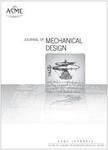版权所有:内蒙古大学图书馆 技术提供:维普资讯• 智图
内蒙古自治区呼和浩特市赛罕区大学西街235号 邮编: 010021

作者机构:UES Inc Beavercreek OH 45432 USA Air Force Res Lab Mat & Mfg Directorate Wright Patterson AFB OH 45433 USA Univ Dayton Res Inst Appl Mech Div Dayton OH 45469 USA Air Force Res Lab Wright Patterson AFB OH 45433 USA
出 版 物:《JOURNAL OF MECHANICAL DESIGN》 (机械设计杂志;美国机械工程师学会汇刊)
年 卷 期:2019年第141卷第4期
页 面:041401-041401页
核心收录:
基 金:Air Force Office of Scientific Research [LRIR 16RXCOR319]
主 题:Trusses (Building) Design Optimization Topology Algorithms Optimization algorithms
摘 要:Origami folding provides a novel method to transform two-dimensional (2D) sheets into complex functional structures. However, the enormity of the foldable design space necessitates development of algorithms to efficiently discover new origami fold patterns with specific performance objectives. To address this challenge, this work combines a recently developed efficient modified truss finite element model with a ground structure-based topology optimization framework. A nonlinear mechanics model is required to model the sequenced motion and large folding common in the actuation of origami structures. These highly nonlinear motions limit the ability to define convex objective functions, and parallelizable evolutionary optimization algorithms for traversing nonconvex origami design problems are developed and considered. The ability of this framework to discover fold topologies that maximize targeted actuation is verified for the well-known Chomper and Square Twist patterns. A simple twist-based design is also discovered using the verified framework. Through these case studies, the role of critical points and bifurcations emanating from sequenced deformation mechanisms (including interplay of folding, facet bending, and stretching) on design optimization is analyzed. In addition, the performance of both gradient and evolutionary optimization algorithms are explored, and genetic algorithms (GAs) consistently yield solutions with better performance given the apparent nonconvexity of the response-design space.